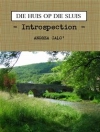
John Wright introduces the reader to the variety, distribution, history, and characteristics of British grasslands – upland and lowland, moors and downs, boggy and maritime, domestic and agricultural. He explores all the main kinds and includes some oddities such as the heavy-metal polluted and richly diverse grasses found near old coalmines. After introducing the reader to the history and variety of Britain’s grassland, the author devotes a chapter each to ten different kinds. He begins with an account of the typical fauna and flora before homing on the climate, geology and social history of one particular place. He then focusses yet further on the fauna and flora of one square metre of ground – one of the patches referred to in the title. He looks in detail at the species he finds and at the inter-actions and sometimes symbiotic relationships between them. Grasslands can look superficially the same but turn out to be utterly different when examined more closely. As John Wright shows again and again there is a much more to a habitat than meets the eye. This is naturalist history at its best: richly anecdotal, endlessly informative, often very funny, and illustrated in full colour with over one hundred of the author’s outstanding photographs.
Over de auteur
John Wright is a naturalist and one of Great Britain’s leading experts on fungi. His most recent book, The Naming of the Shrew: A Curious History of Latin Names was published by Bloomsbury in 2014. His publications include books on how to forage in hedgerows and seashores, on the delights and perils of gathering fungi and mushrooms, and how to make your own booze, all published in the popular River Cottage Handbook series.











